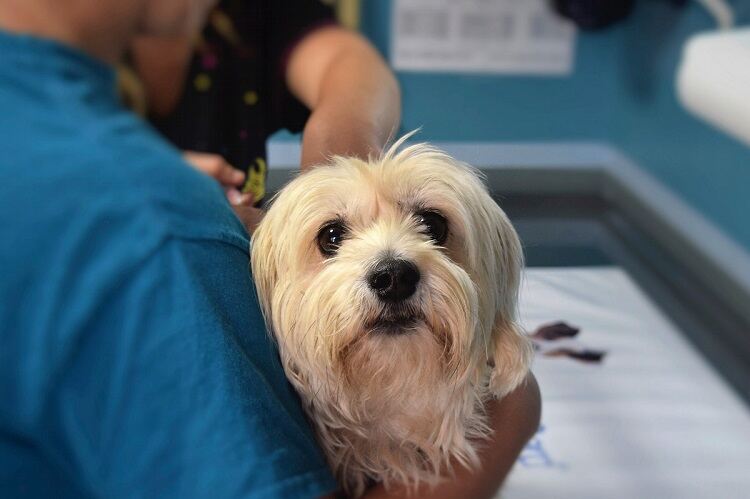Veterinarians frequently advise neutering, which involves the surgical removal of a male dog’s testicles. It has many uses, including population control and the prevention of certain health issues. Many dog owners are curious in the less-discussed parts of neutering, like if their dog’s scrotum would shrink after the treatment, in addition to its main function. We’ll delve into this fascinating subject in this blog article as we look at the behavioral and physical changes that can result from neutering. By the time it’s all over, you’ll know exactly what to anticipate and how to take care of your loved one.
Table of Contents
Will My Dog’s Sack Shrink After Neutering?
Understanding Neutering.

source by : world animal foundation.
It’s critical to comprehend what neutering entails and the rationale behind why it’s frequently carried out before we delve into the specifics of scrotal modifications. In the process of neutering, which is often referred to as castration or spaying, a male dog’s testicles are surgically removed. The primary goals of neutering are as follows:
Population Control: Neutering aids in better control of the canine population by lowering the amount of undesirable puppies.
Improvements in Behavior: It can assist in reducing undesired behaviors like roaming, aggressiveness, and excessive marking.
Benefits to health: Neutering can reduce the risk of developing certain conditions like testicular cancer and prostatic illness.
Scrotal Changes: The Science Behind It.
Let’s now talk about this intriguing inquiry: Will my dog’s sack shrink after neutering? The answer is yes, although each dog will experience change to a different degree. The scientific explanation for this phenomenon is as follows.
Size reduction: The testicles are removed following neutering, which reduces the size of the scrotum. This is as a result of the testicles’ disappearance, which were in charge of creating sperm and testosterone.
Hormonal alterations: The male hormone testosterone is crucial in preserving the size and functionality of the scrotum. Testosterone levels fall after testicles are removed, which causes the scrotal tissue to gradually contract.
Recovery: The body recovers after surgery by going through a healing process, which includes reabsorbing extra tissue and fluids. It also plays a role in the scrotal size decline with time.
It’s crucial to remember that even though the scrotum typically shrinks, it does not entirely vanish. While some dogs may retain a more pronounced scrotal pouch, others may have a smaller scrotum. Each dog experiences shrinkage to a different extent.
Behavioral and Health Effects in Period of Neutering.

Neutering your dog may result in behavioral and health changes in addition to physical ones. Age, race, and personal variation are a few examples of the variables that may have an impact on these impacts.
Behavioral Effects: Territorial marking, aggressiveness, and roaming behaviors can all be decreased by neutering a dog. However, the severity of these modifications can differ, and some dogs might not go through a considerable behavioral adjustment.
Health Advantages: Neutering can lower the chance of aggressiveness, prostate illness, and testicular cancer. However, as early neutering may have significant long-term health repercussions, it is crucial to go through the timing of the procedure with your veterinarian.
Factors Influencing Scrotal Changes.
Several factors can influence how much your dog’s scrotum shrinks following neutering:
Age: Because their adult male features have not fully formed, younger neutered dogs may exhibit more noticeable scrotal atrophy.
Breed: Depending on whether the scrotal pouch is large or tiny, some breeds may experience a considerable shift in size following neutering.
Individual Variation: Dogs’ bodies react differently to surgery and hormonal changes than people do. Scrotal contractions may be more apparent in some dogs than others.1. Age: Because their adult male features have not fully formed, younger neutered dogs may exhibit more noticeable scrotal atrophy.
Real-Life Experiences.

Let’s hear from some dog owners who have had their pets neutered in order to provide a more pertinent perspective on this subject:
Write about or cite examples of dog owners who have experienced scrotal alterations in their neutered dogs.
Will My Dog’s Sack Shrink After Neutering.
Be ready for post-operative care if you are thinking about or have already opted to neuter your dog. Here are some helpful pointers:
Obey veterinary advice: Your vet will provide you detailed guidelines for post-neuter care, such as how to take care of wounds, limit your activities, and manage your pain. To guarantee a speedy recovery, carefully follow these directions.
Monitoring for problems: Keep an eye out for any infections or complications, such as excessive swelling or discharge, at the surgery site. It is crucial to speak with your veterinarian for guidance and support if you have any worries or inquiries about your dog’s recovery following neutering.
Behavior Modification: As your dog heals, exercise patience. There may be behavioral changes, so it’s crucial to create a tranquil, encouraging environment during this time.
Conclusion
Lastly, I want to address the query “Will my dog’s sack shrink after neutering?” The explanation is unquestionably rooted in biology and hormone fluctuations. While scrotal shrinking is frequently a side effect of neutering, it is only one part of this crucial process. Numerous advantages of neutering include population control, less health risks, and maybe improved behavior.
It is crucial that you and your veterinarian discuss the benefits and timing of neutering as a responsible dog owner. Keep in mind that each dog is different, therefore the results of neutering may differ. You can make sure your cherished canine companion has a healthy and happy future by comprehending the science behind scrotal alterations and giving them the attention they need after neutering.
Will My Dog’s Sack Shrink After Neutering?
1. Will my dog’s scrotal sack shrink immediately after neutering?
It’s common for the scrotal sack to appear smaller shortly after neutering due to reduced blood flow and the removal of testicles. However, it may not shrink significantly right away.
2. How long does it take for a dog’s scrotal sack to shrink after neutering?
The timeline for scrotal sack shrinkage varies from dog to dog. In some cases, it may take several weeks to months for the scrotum to noticeably reduce in size.
3. Will the scrotal sack disappear entirely after neutering?
The scrotal sack typically doesn’t disappear completely but may become much smaller and less prominent. Some dogs may still have a small, residual scrotal sack after neutering.
4. Can the scrotal sack become inflamed or infected after neutering?
Yes, it’s possible for the scrotal area to become inflamed or develop an infection after neutering. It’s essential to monitor the area for any signs of infection, such as redness, swelling, or discharge, and consult your veterinarian if you have concerns.
5. Should I be worried if my dog’s scrotal sack doesn’t shrink after neutering?
If your dog’s scrotal sack doesn’t seem to be shrinking or if it appears swollen or painful, it’s advisable to consult your veterinarian. Sometimes, complications or retained testicular tissue can cause issues, and your vet can assess the situation and provide guidance.
